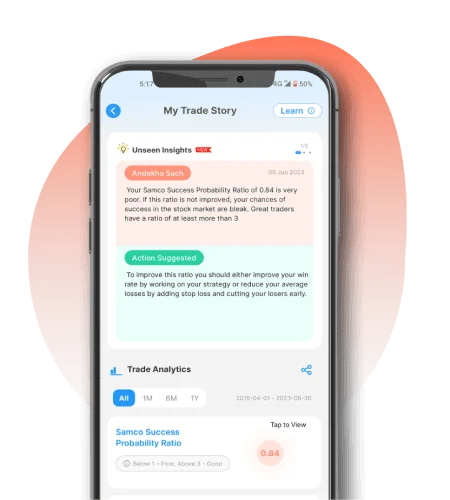Introduction
The commodity market plays a vital role in the global economy, serving as a central hub for trading raw materials like oil, gold, wheat, and more. These markets help determine global prices, ensure fair trade, and provide a platform for producers, consumers, and investors to manage risk and discover prices.
For investors and traders, the commodity market offers unique opportunities and challenges. While commodities can diversify portfolios and act as a hedge against inflation, they also come with high volatility and exposure to unpredictable external factors.
This guide presents a balanced view of the commodity market by exploring both its advantages and disadvantages. Whether you're a beginner or an experienced investor, understanding these aspects is essential for informed decision-making. With growing interest in commodity trading, this guide will help you assess whether commodities align with your financial goals and risk tolerance. You'll also learn how to approach the market with the right tools, strategies, and mindset.
What is the Commodity Market?
The commodity market is a financial marketplace where primary products are bought, sold, and traded. These commodities are typically divided into two main categories:
- Hard Commodities: These include natural resources like oil, gold, silver, and other metals.
- Soft Commodities: These are agricultural products such as wheat, coffee, sugar, and cotton.
Trading in commodities happens through spot markets (immediate delivery) and derivatives markets (futures and options contracts).
Some of the major global and Indian exchanges include:
- MCX (Multi Commodity Exchange) – India
- NCDEX (National Commodity & Derivatives Exchange) – India
- NYMEX (New York Mercantile Exchange) – USA
- LME (London Metal Exchange) – UK
The market attracts a diverse set of participants:
- Producers: Looking to hedge price risks
- Consumers: Locking in future prices
- Speculators: Aiming to profit from price changes
- Investors: Seeking portfolio diversification
These participants contribute to liquidity, price discovery, and risk transfer, making the commodity market an essential component of global finance.
Advantages of the Commodity Market
Diversification of Investment Portfolio
Commodities provide an effective hedge against inflation and stock market volatility. Unlike equities, commodity prices often move independently. For instance, when inflation rises, prices of goods like crude oil and gold tend to climb, preserving the purchasing power of your investment.
Adding commodities to a portfolio reduces overall risk and enhances stability. For example, while stocks may drop during economic downturns, commodities like gold often rise, offering a natural cushion.
High Liquidity
Most commodities, especially crude oil, gold, and silver, are highly liquid. This means they can be bought or sold quickly without significantly affecting the market price. High liquidity enables traders to exit positions swiftly and manage risks effectively.
Hedge against Inflation
Historically, commodities have served as a strong inflation hedge. When the value of money declines, the prices of physical assets like gold, oil, and grains typically rise. This makes them valuable in uncertain economic conditions. For example, during the 2008 financial crisis, gold saw a sharp rise, offering protection to investors.
Global Trading Opportunities
Commodities are traded worldwide, offering access to international price trends and opportunities. This global exposure allows investors to benefit from trends in foreign markets. For instance, geopolitical tensions in oil-producing nations can lead to global oil price surges, which investors can capitalize on.
Leverage Opportunities
Commodity markets often allow traders to use leverage, meaning you can control a large position with a smaller amount of capital. While this amplifies profits, it also increases potential losses, making it a double-edged sword. For seasoned traders, this can be an effective way to maximize gains from short-term price movements.
Disadvantages of the Commodity Market
High Volatility and Risk
Commodity prices are highly sensitive to changes in supply and demand, weather conditions, political instability, and global economic trends. For example, natural disasters or geopolitical conflicts can lead to sudden price spikes. This volatility can result in significant losses if not managed properly.
Speculative Nature
A large portion of commodity trading is driven by speculation. This can cause prices to deviate from fundamentals, making them less predictable. While speculators add liquidity, their presence can also lead to sharp, short-term price swings that may not reflect real supply-demand dynamics.
Leverage Risk
Although leverage can magnify gains, it also increases the risk of substantial losses. A small price move in the wrong direction can wipe out an entire investment. For beginners, trading with leverage without proper risk controls can be financially damaging.
Lack of Control over External Factors
Investors in commodities have no influence over critical factors like weather, natural calamities, global supply chains, or political events. A drought in Brazil can drive up coffee prices; a war in the Middle East can spike oil prices. Such unpredictability adds an extra layer of risk.
Complexity for Beginners
Commodity trading involves technical knowledge, understanding of macroeconomic indicators, and familiarity with derivatives like futures and options. For beginners, the learning curve is steep. Without proper education and a clear strategy, new investors may find the market overwhelming and suffer losses.
How to Approach the Commodity Market
Entering the commodity market requires a well-thought-out strategy. Here are some practical tips:
- Educate Yourself: Start with the basics of commodity trading, futures, and market dynamics.
- Use Reliable Sources: Follow credible financial news platforms, market reports, and trading data.
- Start Small: Begin with limited capital to gain experience without major risk.
- Implement Risk Management: Use stop-loss orders, diversify across commodities, and avoid over-leveraging.
- Consider Professional Advice: If you're new, consider consulting a financial advisor or using platforms with research-backed insights.
Using tools like futures contracts and options can also help in managing risk. Staying updated with market trends, weather reports, and geopolitical developments is key to making informed decisions.
Conclusion
The commodity market offers both lucrative opportunities and significant risks. Its benefits like portfolio diversification, inflation protection, and global access make it a valuable tool for investors. However, the high volatility, speculative nature, and complexity demand careful research and disciplined risk management.
Before entering the commodity market, assess your risk appetite and financial goals. Whether you’re a beginner or a seasoned investor, understanding both sides of the coin will help you navigate the market effectively. Commodities, when approached wisely, can be a strong addition to a diversified investment strategy.








 Easy & quick
Easy & quick